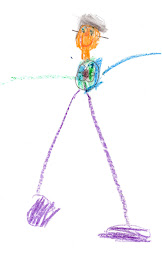My mother was 16 in 1932 when the country was in the depths of the Great Depression. She had one dress, and since she was the tallest female in the family, there were no hand-me-downs. It was a painful time to be a teenager, and the privations she suffered molded her attitude toward possessions. They were purchased after much deliberation, not taken lightly and not thrown away until there was absolutely no “good” left in them.
Like most of the people who were young during WWII, I remember ration cards, underpants without elastic (they kept falling down), the thrill of going to the grocery store that had just got in a shipment of bananas, black-outs (even though we were a tiny town in the middle of the country), and the uncertainty that comes from not knowing if our country would win or not. There was a “waste-not, want-not” attitude that clings to this day.
The “Boomers,” the “X Generation,” and the “Millennials” all have characteristics shaped by the political condition of the country, but over the past 50 years there has emerged the attitude that nothing should be saved if it doesn’t have a current use. If something has hung in your closet for a year without being worn, get rid of it. That jar that the pickles came in is just garbage, not something you might use to store left-overs. Old tires are an expensive nuisance to get rid of. When you get tired of a piece of furniture, you just pitch it out and buy new. And if saving stuff is silly, hoarding is a sin or a disease.
The quandary for humans today is deciding what is treasure and what is trash. For many it’s simply saying, “Am I going to use this in the next 3 months?” If the answer is “no,” out it goes. Not for them the crowded closets, overflowing junk drawers, or crammed book cases.
For the rest of us, the decision making is not so easy. Who wouldn’t like to have the very first Batman comic book that you bought for a dime in 1940? The first Barbie doll even in played-with condition is worth a mint to doll collectors. The original Pez Dispenser that you played with and then pitched would buy you a fancy meal today. The Cracker-Jack tiny metal racer was so insignificant that you didn’t even think about throwing it away. Carnival glass dishes were freebies in boxes of soap. And so on and on.
The trouble is that we can’t tell what is going to have value in the future. That’s bothersome to most of us, but to some it is frightening. And because they cannot know what will have value in the future, they save it all. They become buried in their accumulations and ridiculed for being foolish…or sick.
Perhaps it would be better if we stepped back in our judgementalism and considered these souls as “rescuers.” Rescuers of the trivial and mundane so that in the future these things will not be forgotten.
Most of what they save is probably trash, but mixed into the heaps of stuff will be treasures, things that the contemporary Discarders may even pay good money for at an estate auction and proudly display in their tidy homes.
Published in the Woodford County News Bulletin, 21 May 2014
Sunday, May 18, 2014
Subscribe to:
Post Comments (Atom)


No comments:
Post a Comment